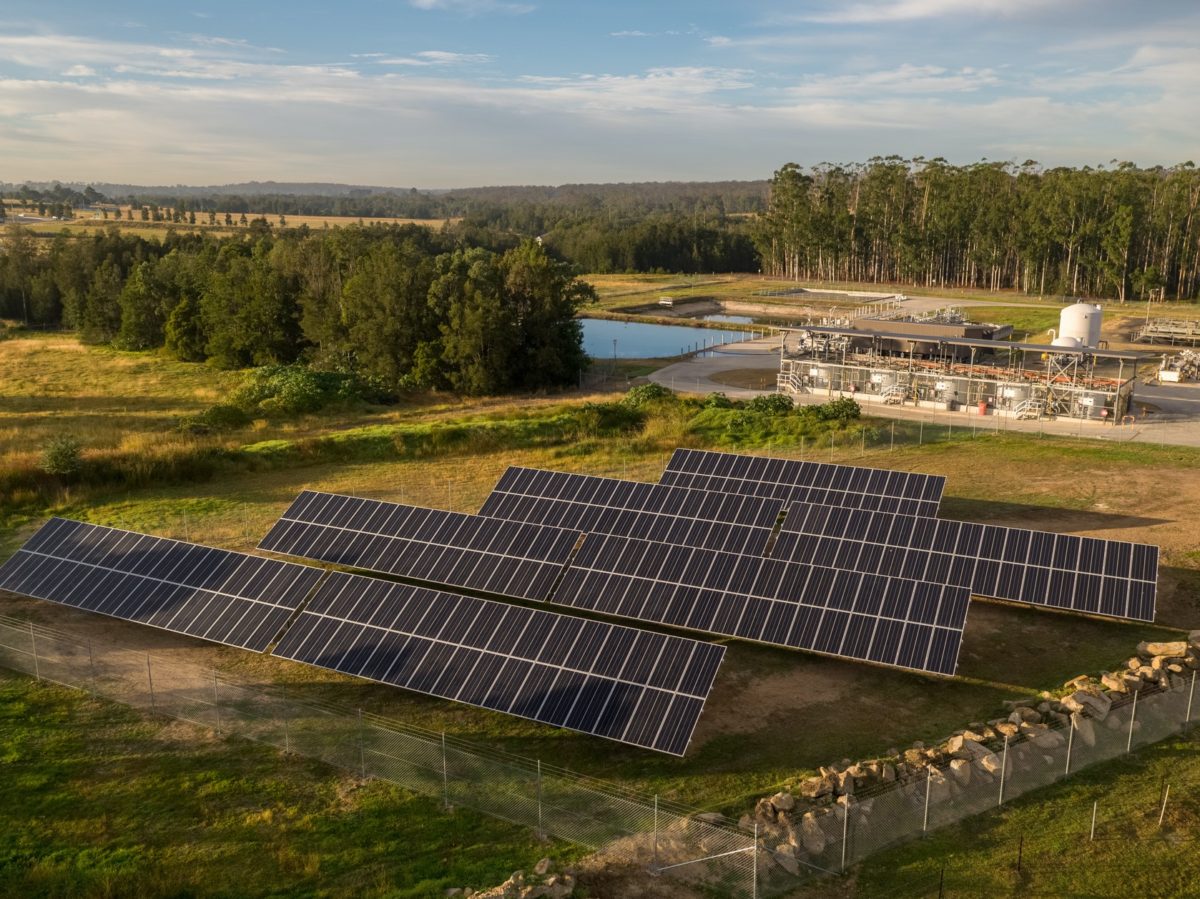The New South Wales (NSW) Berejiklian Government is set to invest over $15 million into renewable energy installations at Hunter Water’s treatment plants and pump stations over the next four years as the utility surges toward carbon neutrality.
Perhaps inspired by the solar success of South Australian water and sewage utility SA Water, which announced in January that it was going to invest more than $300 million in solar and energy storage in 2020 alone, Hunter Water has already installed a 100 kW solar system at the Branxton Wastewater Treatment Works.
Melinda Pavey, NSW Minister for Water, Property and Housing said that this “investment is all about innovation and supporting jobs in the Hunter while also reducing Hunter Water’s electricity bill.”
The 252-panel 100 kW solar array is the first of Hunter Water’s planned uptake. The system is comprised of both rooftop and ground-mounted panels, and there is scope for additional capacity in the future.
“We’re really excited by the Renewable Energy Project and what lies ahead of us,” said Hunter Water Managing Director, Darren Cleary. “Electricity is one of our major expenses, accounting for about 10% of our operating costs and solar is one of a number of opportunities available that can help to reduce these costs, and reduce carbon emissions.”
Upon complete rollout, which will see at least 20 sites embrace solar, including Morpeth, Kurri Kurri, and Boulder Bay Wastewater Treatment Works, the entire Renewable Energy Project is estimated to save Hunter Water $1.15 million on its bill every year.
“We see this project as an ongoing opportunity to add sites and new technologies as they emerge,” continued Cleary, “including battery storage and floating solar, to help[ us achieve our goal of carbon neutrality.”
Water Industry Rising with the Solar Tide
In January 2020, researchers at the University of Queensland’s (UQ) School of Chemical Engineering quantified the amount of on-site renewable electricity generation in the Australian water industry, finding solar PV to be among the most adopted sources of electricity.
According to a paper published in the Journal of Cleaner Production, UQ researchers found that in 2018 (the study’s focus year), the Australian water industry generated 18% (279 GWh/y) of its electricity demand from on-site renewable electricity sources.
Of course, this number is set to rise significantly thanks to the strong investment of SA Water and Hunter Water, but those two aren’t alone. In 2019, thirteen of Victoria’s water corporations partnered to buy clean energy from the Kiamal Solar Farm. In February 2020, Western Australian Government-owned Water Corporation committed $30 million of three years toward solar energy projects. In the same month, Victoria’s Central Highlands Water became yet another tributary to the river of Australian water utilities investing in solar thanks to its community-driven Solar Initiative.
NSW Getting Solar Serious
Investing in solar energy for publicly owned facilities is a sure way to save on emissions and electricity costs, and it’s not just Hunter Water that is seeing state funds flow into to support solar uptake. Only this week it was announced that a 600 kW system would be installed on the roof of the Armidale Hospital as part of its redevelopment. The redevelopment didn’t originally include renewable energy, but unlike the Federal Government, 2020 has convinced NSW that now is the time to act.
This content is protected by copyright and may not be reused. If you want to cooperate with us and would like to reuse some of our content, please contact: editors@pv-magazine.com.









By submitting this form you agree to pv magazine using your data for the purposes of publishing your comment.
Your personal data will only be disclosed or otherwise transmitted to third parties for the purposes of spam filtering or if this is necessary for technical maintenance of the website. Any other transfer to third parties will not take place unless this is justified on the basis of applicable data protection regulations or if pv magazine is legally obliged to do so.
You may revoke this consent at any time with effect for the future, in which case your personal data will be deleted immediately. Otherwise, your data will be deleted if pv magazine has processed your request or the purpose of data storage is fulfilled.
Further information on data privacy can be found in our Data Protection Policy.